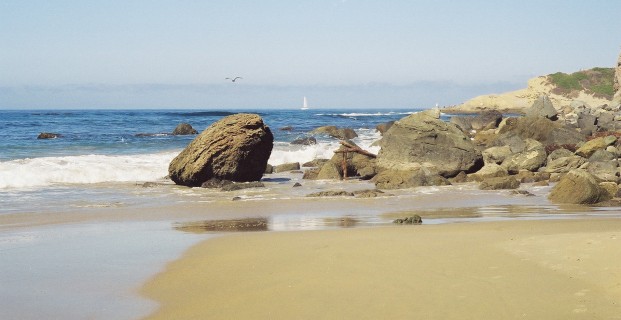Of all the subjects, a landscape offers perhaps the greatest challenge to the photographer. You cannot control the way that the light falls on a field or a water fall, or the untamed grandeur of the land or the sky by just placing a floodlight here and a reflector there.
In this article I will be discussing tips on taking not just good, but outstanding landscape photographs. And why it doesn’t matter whether you use a film camera or a digital camera, manual or automatic, they don’t make the picture great – you do!
As a photographer the two most important things that you must do first are SEEING and THINKING. SEEING – is about picking your subject, a good subject. THINKING – is about your using the 3 Elements of Photography: Technical Manipulation; Composition and Lighting. True there is no wrong way to take a picture, but your goal in making that great picture is to communicate a fact or a feeling, to affect the viewer emotionally.
TECHNICAL MANIPULATION
As with any photograph you need to find the Point of Interest, or POI. Here is where SEEING comes into play. Most landscape pictures are taken with a wide angle or a short telephoto lens. You must make sure that it’s clear to the viewer just what the POI is. Look for patterns and lines that help to draw the viewer to the POI. A change in color and contrast can also help.
Modern cameras have remarkably sophisticated metering systems. Unfortunately depending on the subject, even the best systems can be fooled. With a bright background, with a dark background, too much sky – don’t take a chance. Bracket Your Exposure – Make an exposure that is normal by the camera’s meter, then take one that is + 1 f/stop and one that is – 1 f/stop, 3 exposures.
One advantage of using a digital camera is that it can show you a Histogram. A graphic representation of the image, which is even more accurate than your camera’s metering system. The Black level is shown on the left side of the LCD screen, and the White level on the right. The center of the graph represents the Gray areas of the image.
A good exposure for the POI of the picture starts with the very bottom of the left corner. Here are the blackest blacks and ends at the very bottom of the right corner, with the whitest whites. Too high a line on the left will result in muddy shadow areas. Conversely too high a line on the right will over expose the picture.
COMPOSITION
Composition is probably the most useful way to draw the viewer’s eyes to the POI.
Leading Lines carries the viewer’s eyes into the frame – to the point of interest. A good example would be a river, a straight or curved road, railroad tracks, a fence etc.
Avoid putting the Point of Interest in the center of the frame. Use The Rule of Thirds. In the view finder, draw 2 vertical lines and 2 horizontal lines. This will create 9 equal boxes – 3 boxes up and 3 boxes across. Where the lines intersect creates 4 points or thirds. Place the subject on one of these intersecting points.
Also be watchful of what is behind the subject. More good photographs have been ruined by a bad or distracting background. If that is the case move to a different Perspective. The focal length of your lens can also make a difference. A wide angle lens tends to exaggerate Perspective. A telephoto lens tends to minimize Perspective – the apparent distance between nearby and distant objects. So using a wide angle lens is usually the best choice.
LIGHTING
The last Element of Photography is Lighting. You get a certain feeling when you are outdoors gazing at some aspect of nature, and your photographs should convey that same feeling to the viewer. What you see thru the camera eye piece and what the camera sees will depend a great deal on the Lighting. The Technical and the Composition of the picture are important – but to get just the right Lighting requires the most planning and patience. The picture you see in your mind’s eye and what you see in the viewfinder are not always going to be the same. Your mind interprets the picture but the camera will just take a 2 dimensional representation of it.
The time of day will affect a scene the most. The Light is much warmer early in the morning and late in the day. Qualities of Light, its direction and color, fit different scenes and moods. Most landscapes are taken using Front Lighting. This is where the sun is at your back. Nice but you probably won’t get a lot of detail in the shadows. You’ll see the detail but the camera won’t register it. Move to a different position which will put the sun at a 45 degree angle. This will give you much better shadow detail.
For a more dramatic picture put the sun at a 90 degree angle in the picture. Some of the objects in the picture will be in bright Light, others will have very dark shadows. With this type of Lighting it would be best to Bracket the Exposure.
With Back Lighting, where the sun is directly in front of you, foreground objects will be in dark shadows, or will just be a silhouette. And again it would be best to Bracket the Exposure.
Choices, it’s all about choices – Your choices. So when you are going to be out shooting landscapes, remember the 3 Elements of Photography – Technical Manipulation, Composition, and Lighting. It’s all about your Seeing and your Thinking – that will help you to take Outstanding Landscape Photographs.

